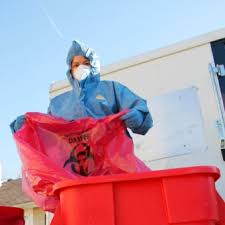What Are the Types of Medical Waste?
2/29/2020

Disposal of medical waste needs to be done in different manners depending on the type of the waste. Medical waste covers a range of by-products released by hospitals, clinics, and during different medicinal procedures in general by the healthcare industry. Here is a list of the common types of medical waste:
- Pharmaceuticals: All expired, unused medications including pills, antibiotics, and injectables as well as contaminated vaccines are pharmaceutical waste.
- Infectious Waste: medical waste that has the potential to be infectious or spread an infection falls in this category. It includes tissues, swabs, excreta, lab cultures, and equipment.
- Sharps: medical waste that includes matter that can pierce the skin such as scalpels, needles, lancets, razors, ampules, broken glass, staples, trocars, and wires are considered sharps.
- Chemical: solvents and disinfectants used for investigations or laboratory purposes, heavy metals and batteries discarded from medical equipment, and mercury from damaged thermometers cover chemical waste.
- Pathological: bodily fluids and tissue, body parts, blood, and contaminated animal carcasses fall under this category of medical waste.
- Radioactive: medical waste that contains unused or discarded radiotherapy and lab research liquids are categorized as radioactive waste.
- Genotoxic Waste: it is a hazardous medical waste that can be carcinogenic, mutagenic, and teratogenic. It includes cytotoxic drugs used in the treatment of cancer.
- Non-Regulated, General Medical Waste: any non-hazardous waste that poses no specific chemical, physical, biological, and radioactive danger falls under this category.
